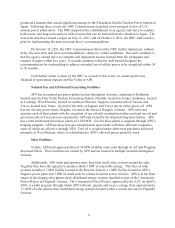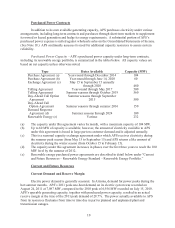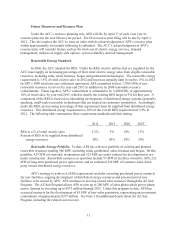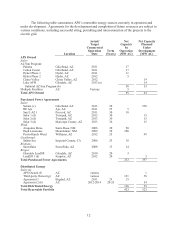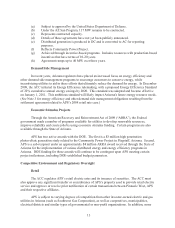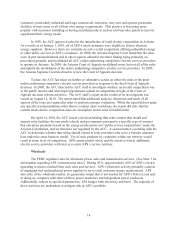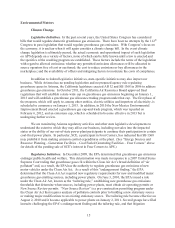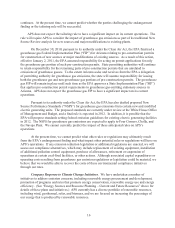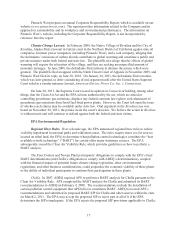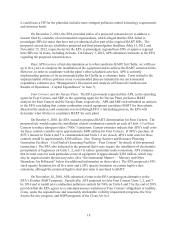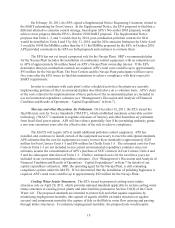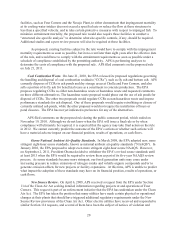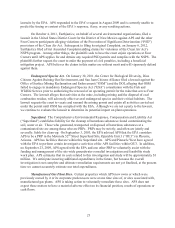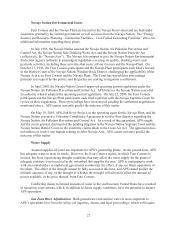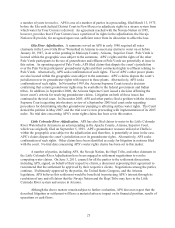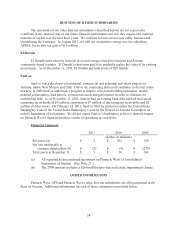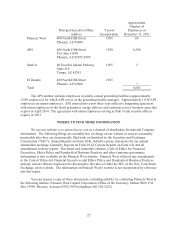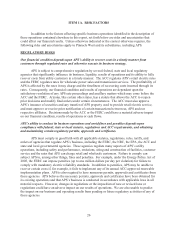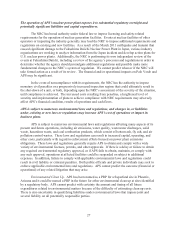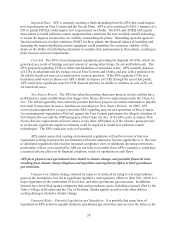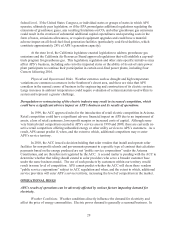APS 2011 Annual Report Download - page 43
Download and view the complete annual report
Please find page 43 of the 2011 APS annual report below. You can navigate through the pages in the report by either clicking on the pages listed below, or by using the keyword search tool below to find specific information within the annual report.19
On February 10, 2011, the EPA signed a Supplemental Notice Requesting Comment, related to
the BART rulemaking for Four Corners. In the Supplemental Notice, the EPA proposed to find that a
different alternative emission control strategy, based upon APS’s November 2010 proposal, would
achieve more progress than the EPA’s October 2010 BART proposal. The Supplemental Notice
proposes that Units 1, 2, and 3 would close by 2014, post-combustion pollution controls for NOx
would be installed on Units 4 and 5 by July 31, 2018, and the NOx emission limitation for Units 4 and
5 would be 0.098 lbs/MMBtu, rather than the 0.11 lbs/MMBtu proposed by the EPA in October 2010.
APS provided comments to the EPA on both proposals and continues to evaluate them.
The EPA has not yet issued a proposed rule for the Navajo Plant. SRP’s recommended plan
for the Navajo Plant includes the installation of combustion control equipment, with an estimated cost
to APS of approximately $6 million based on APS’s Navajo Plant ownership interest. If the EPA
determines that post-combustion controls are required, APS’s total costs could be up to approximately
$93 million for the Navajo Plant. The Four Corners and the Navajo Plant participants will have up to
five years after the EPA issues its final determinations to achieve compliance with their respective
BART requirements.
In order to coordinate with each plant’s other scheduled activities, the plants are currently
implementing portions of their recommended plans described above on a voluntary basis. APS’s share
of the costs related to the implementation of these portions of the recommended plans are included in
our environmental expenditure estimates (see “Management’s Discussion and Analysis of Financial
Condition and Results of Operations – Capital Expenditures” in Item 7).
Mercury and other Hazardous Air Pollutants. On December 16, 2011, the EPA issued the
final Mercury and Air Toxics Standards (“MATS”), which established maximum achievable control
technology (“MACT”) standards to regulate emissions of mercury and other hazardous air pollutants
from fossil-fired power plants. APS will have three (potentially four if the permitting authority grants
a one-year extension) years after the effective date of the rule to achieve compliance.
The MATS will require APS to install additional pollution control equipment. APS has
installed, and continues to install, certain of the equipment necessary to meet the anticipated standards.
APS estimates that the cost for equipment necessary to meet these standards is approximately $220
million for Four Corners Units 1-3 and $89 million for Cholla Units 1-3. The estimated costs for Four
Corners Units 1-3 are not included in our current environmental expenditure estimates since our
estimates assume the consummation of APS’s purchase of SCE’s interest in Four Corners Units 4 and
5 and the subsequent shut down of Units 1-3. Cholla’s estimated costs for the next three years are
included in our environmental expenditure estimates. (See “Management’s Discussion and Analysis of
Financial Condition and Results of Operations – Capital Expenditures” in Item 7 for details of our
capital expenditure estimates). SRP, the operating agent for the Navajo Plant, is still evaluating
compliance options under the MATS. If it is determined that the installation of polishing baghouses is
required, APS’s total costs could be up to approximately $92 million for the Navajo Plant.
Cooling Water Intake Structures. The EPA issued its proposed cooling water intake
structures rule on April 20, 2011, which provides national standards applicable to certain cooling water
intake structures at existing power plants and other facilities pursuant to Section 316(b) of the Clean
Water Act. The proposed standards are intended to protect fish and other aquatic organisms by
minimizing impingement mortality (the capture of aquatic wildlife on intake structures or against
screens) and entrainment mortality (the capture of fish or shellfish in water flow entering and passing
through intake structures). To minimize impingement mortality, the proposed rule would require


